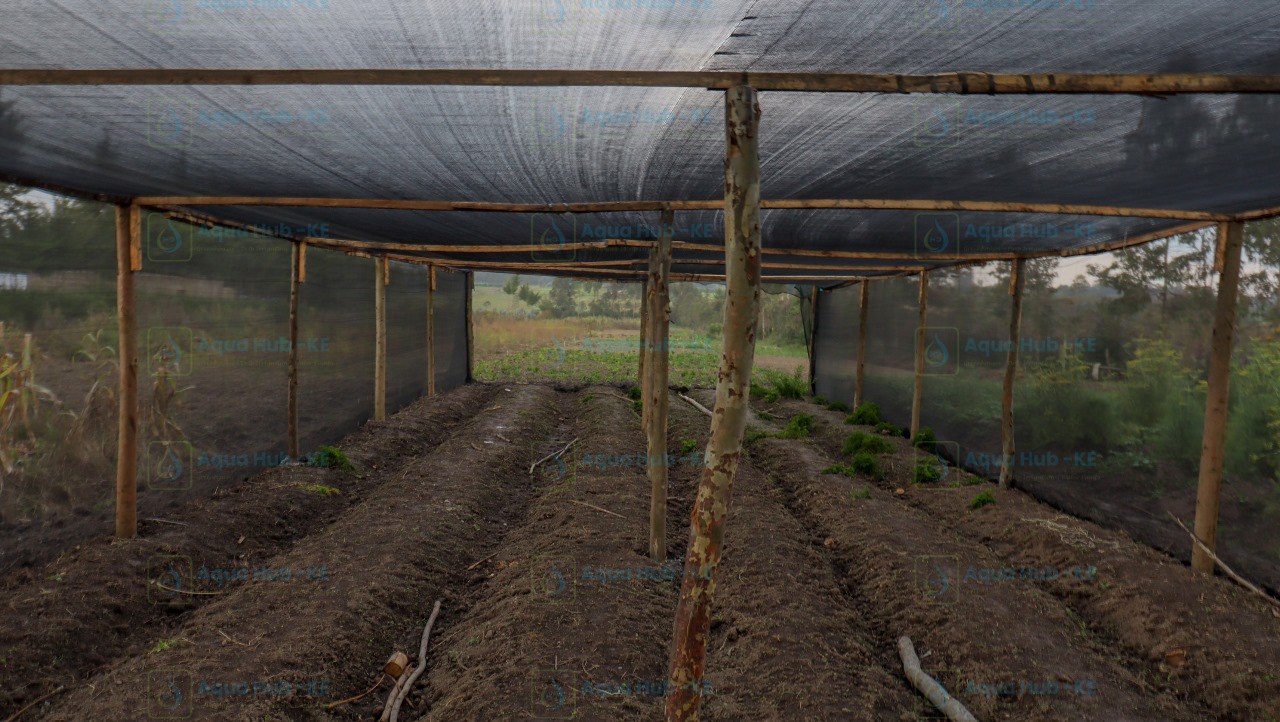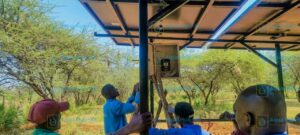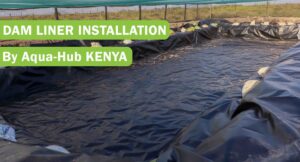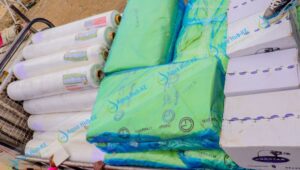Shade Net Material cost is KES 13,000 to a maximum of KES 37,000 for high density or lowest sunlight penetration level.
The cost of shade nets is according to the sunlight protection levels available as well as the type of shade net material.
With the dependence of climate sustainable solutions in propagation and growing of crops, our shade nets are popular in East Africa.
Buy Shade Nets in Nairobi and Get Installation Done for You
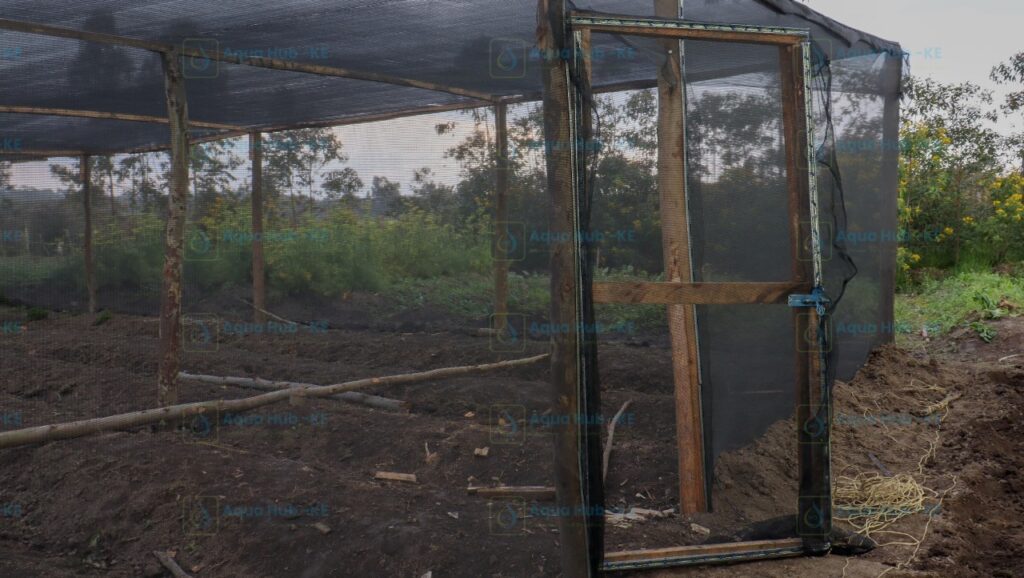
Aqua Hub LTD offers the best prices for quality UV treated shade nets in Kenya. We target all crop growers in urban, rural and suburban areas of Kenya. We also supply farmers in East Africa at large.
Buying from us makes you benefit from the professional installation of your shade nets. Our team includes technicians with expertise in shade net installation.
Shade Net Material Cost in Kenya
Most agricultural shade net suppliers source their nets from manufacturers abroad, China being the main place of Origin. We, however, engage with the best manufacturers of shade net made with UV resistance Compounds.
For Our shade net material price for the available sunlight protection levels are as shown in the table below.
| Shade Net Sunlight Protection Level (%) | Cost (KES) |
| 35 % | KES 13,000 |
| 55% | KES 20,000 |
| 75 % | KES 27,000 |
| 90% | KES 37,000 |
Sunlight Filtration Levels of Our Shade Net Materials
Our shade nets exist in sunlight protection levels of 35%, 55%,75% and 90% all measuring 4 by 50 m dimensions.
Sunlight filtration or protection levels are the limit or rate that a shade net blocks the sunlight rays. Let’s say you choose to use a 35% shade net. In this case, the material will block out 35% of the sun and allow 65% of the remaining sunlight.
How to Know which Shade Net Material | Percentage to Use
- Which Crop are you growing or Propagating? Put in mind the choice of plants you want to grow. Because crops do well in different climatic conditions specifically temperature and humidity, they are suited to unique shading conditions. Those that thrive under high temperature will need low filtration such as 35% nets. On the other hand, crops that love shade conditions are best grown under dense nets such as 75 and 90%
- What is the Climatic Condition of your Region?
Shade net materials are designed specifically for hot regions with low rainfall and humidity. Colder regions may also require the use of shade nets to propagate delicate crops and protect them from frost, pests, and heavy rain. It is appropriate to use high filtration shade net in hotter regions and lower filtration in cold regions.
- Are you growing short season or annual Crops?
Propagation of short season crops such as vegetables and seedlings will require a simple shade structure and probably low-density shade net. Use knitted shade net material for agricultural short season crop production.
- Are you relying on artificial or natural growing conditions?
Depending on your level of production or type of agricultural venture your shade net sunlight level will vary. For instance, in-house growing structures for crop research institutions will require 100 % UV shade net and light systems including watering kits and sensors. Farmers on the other hand, will need knitted shade nets that rely on natural sunlight conditions for growth.
Crops that Thrive Under Shade Net Material
- Leafy greens: spinach, lettuce and Swiss chard grow best in areas with moist soil and lower temperatures.
- Brassicas: Cabbage, Kales, broccoli and cauliflower require shade when grown in hot areas.
- Herbs: Cilantro, mint, parsley, and basil benefit from partial shade, preventing them from drying out too quickly.
- Berries: Raspberries and blackberries thrive with some shade, especially in hot climates.
- Ferns and Shade-Loving Flowers: Ferns, Hostas, and Begonias prefer lower light levels and indirect sunlight
How to Determine the Best Shade Net Material for Crops
- UV Protection: to ensure long lasting use, choose a shade net manufactured with UV resistant Polyethylene materials.
- Size of the shade house: measurement of the area to build the shade house and calculation of the net size should be done to ensure it matches the requirement.
- Crops to grow: Consider the crops you want to propagate before you decide which net percentage to buy.
- Level of Growth: depending on the growing season, learn the amount of shade your crops need.
- Climatic Region: the climatic conditions of an area are important to consider before a decision is made on the net to invest in.
Common Uses of Shade Net Materials in Kenya
Shade net uses go beyond agriculture to other uses from homes to industrial applications. The crop specific uses plus other uses include.
- Nursery Seedling Propagation: when starting seedlings from mere seeds, you always need a structure to prevent the scorching sun, heavy rain, weed and interference. Shade nets are the perfect materials to use in the structure as they reduce sunlight, retain moisture and slow down weed growth.
- Vegetable growing leafy green vegetables such as kales and spinach also do well in lower sunlight filtration shade net. 35% knitted shade net helps reduce evaporation as well as weed growth. For hot regions with water challenges, you will grow quality vegetables using the little available water.
- Fish Farming: shade net is used as a cover material for fishponds, or structures for rearing crabs, oysters and lobsters.
- Greenhouse temperature regulation: because of their suitable mesh filtration, shade nets are used in greenhouse structures to reduce sunlight levels in hot areas.
- Propagating fruits: Some fruits such as strawberries can be grown in shade houses to lower water loss and enhance fruit quality.
- Horticulture: flower farming. Shade nets are ideal for flowers such as pyrethrum, roses, and bougainvillea.
- Herbs: Some herbs such as chives, ferns and mushrooms are grown in shaded environments.
- Construction or tall buildings: safety nets in construction sites.


